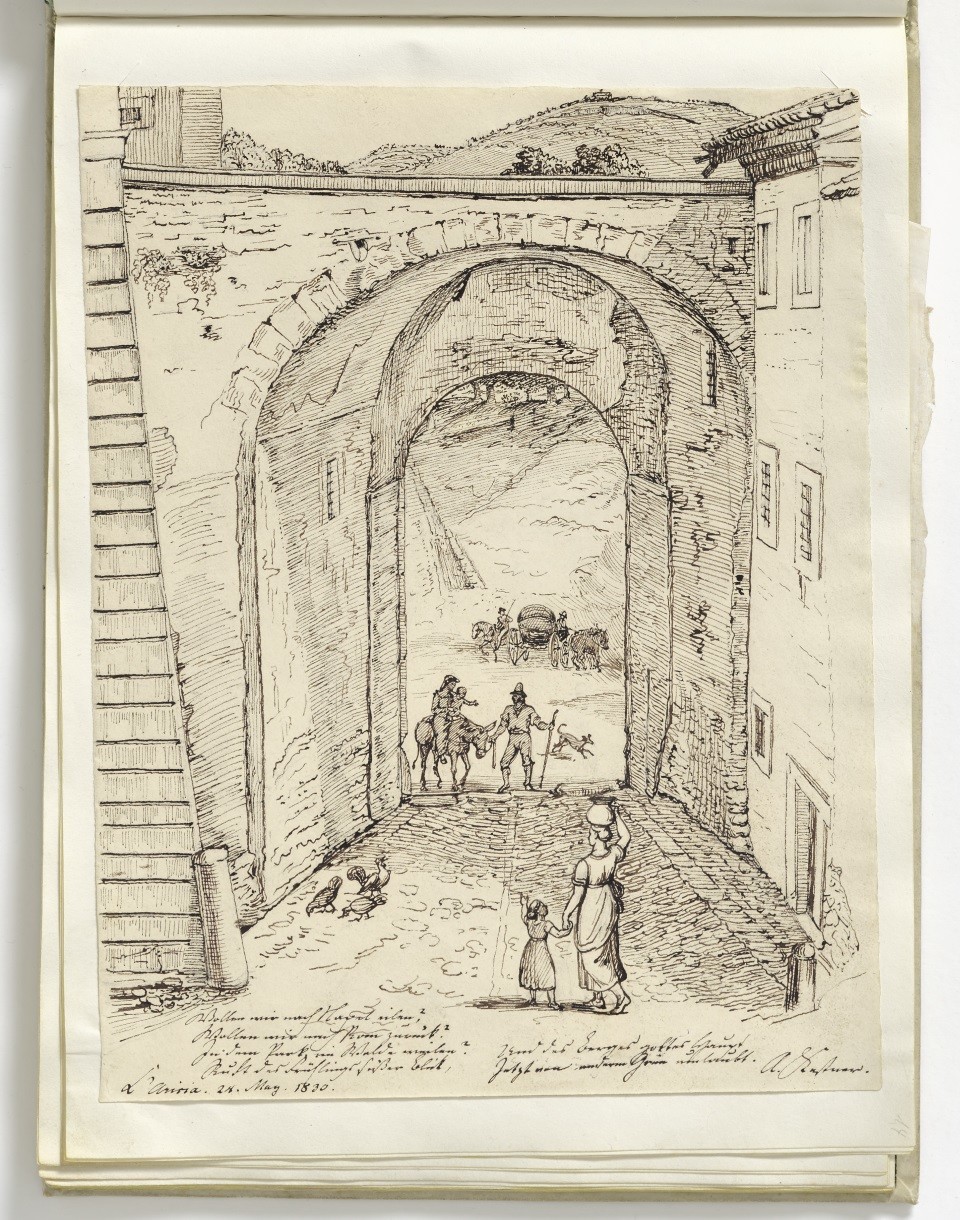August Kestner gibt das verfallene Stadttor des Ortes Ariccia wieder. Ariccia war ein bei Reisenden und römischen Künstlern beliebtes Ausflugziel, das auch Kestner gemeinsam mit den Rehbergs am 24. Mai 1830 besuchte. Diesem Besuch widmet er nicht nur diese Zeichnung, sondern auch ein kleines Gedicht, das er auf dem unteren Blattrand vermerkt. (AVS)
en
















